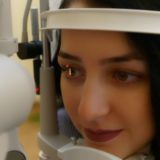Stephen Hawking’s Disease: A Comprehensive Overview

Introduction:
Stephen Hawking’s disease, also known as motor neurone disease (MND) or amyotrophic lateral sclerosis (ALS), is a debilitating neurological disorder that affects the nerves responsible for controlling voluntary muscle movements. With its profound impact on the renowned physicist Stephen Hawking’s life, this disease has garnered significant attention. This article delves deep into the various aspects of Stephen Hawking’s disease, providing an all-encompassing understanding of its nature, types, prevalence, and quantifiable measures. Furthermore, it explores the differences between different types of the disease, offers a historical overview of the advantages and disadvantages associated with its management, and concludes with key takeaways for health-conscious consumers.
I. An In-Depth Look at Stephen Hawking’s Disease:

– Stephen Hawking’s disease, also known as ALS or MND, is a progressive neurodegenerative disorder that affects nerve cells in the brain and spinal cord.
– It leads to the deterioration of these cells, ultimately resulting in the loss of muscle control, impacting speech, mobility, and even breathing.
– The causes of the disease are still largely unknown, though various genetic and environmental factors have been suggested to play a role.
– The prevalence rates vary across different populations, with a higher incidence observed in certain regions.
II. Understanding the Different Types of Stephen Hawking’s Disease:
– There are several types of Stephen Hawking’s disease, classified based on the affected nerve cells and the pattern of progression.
– The most common form is Sporadic ALS, accounting for approximately 90-95% of cases, while the remaining cases are hereditary and familial ALS.
– Sporadic ALS arises without a clear genetic link, while familial ALS is inherited and runs in families, caused by specific gene mutations.
– Some rarer variants, such as primary lateral sclerosis and progressive muscular atrophy, exhibit distinct clinical and pathological features.
III. Quantitative Measures in Stephen Hawking’s Disease:
– Various quantitative measurements are used to assess the progression and severity of Stephen Hawking’s disease.
– The Amyotrophic Lateral Sclerosis Functional Rating Scale Revised (ALSFRS-R) is widely employed to evaluate daily functional abilities.
– Forced vital capacity (FVC) measures lung function, while electromyography (EMG) and nerve conduction studies aid in diagnosing the disease.
– Other quantitative measures, such as survival rates and disease progression markers, continue to be important areas of research.
IV. Exploring the Differences between Different Types of Stephen Hawking’s Disease:
– While all forms of Stephen Hawking’s disease exhibit similar clinical features, there are notable differences in progression rates and affected regions of the body.
– Sporadic ALS typically affects both upper and lower motor neurons, leading to a faster progression compared to familial ALS, which often starts in specific muscle groups.
– Furthermore, variants like primary lateral sclerosis primarily impact upper motor neurons, resulting in a more limited motor impairment.
V. Historical Overview of Management Approaches and their Pros and Cons:
– Over the years, different management approaches have been employed to alleviate the symptoms and improve the quality of life for individuals with Stephen Hawking’s disease.
– These range from early supportive care and assistive technologies to more recent therapeutic interventions, such as drug treatments and non-invasive ventilation.
– While these advancements have provided significant benefits, challenges remain, including access to affordable treatments and the need for more targeted therapies.
Conclusion:
Stephen Hawking’s disease, a debilitating neurological disorder, poses significant challenges for patients, their families, and the medical community. By delving deep into its overview, different types, quantitative measures, differences between them, and historical management approaches, a comprehensive understanding of this disease emerges. Continued research and advancements in treatment options hold promise for better outcomes and improved quality of life for those affected. As health-conscious consumers, staying informed about Stephen Hawking’s disease empowers individuals to support its research, advocate for accessible treatments, and contribute to raising awareness about this complex condition.

















